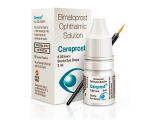Amoxicillin 875 mg
Amoxicillin 875 mg is a widely prescribed antibiotic that is used to treat a variety of bacterial infections. Its uses include treating infections in the throat, nose, and ears, as well as urinary tract infections, pneumonia, bronchitis, and skin infections.
Amoxicillin 875 mg is typically taken twice a day, with or without food, depending on your doctor's instructions. The dosage will depend on the severity of the infection and your age and weight. It is important to take the full course of the antibiotic, even if you feel better, to ensure that the infection is fully treated.
While amoxicillin is generally well-tolerated, some people may experience side effects such as nausea, vomiting, diarrhea, and allergic reactions. It is important to notify your doctor if you experience any unusual symptoms while taking amoxicillin.
As with any medication, it is important to take precautions when taking amoxicillin 875 mg. Inform your doctor of any other medications you are taking, including over-the-counter medications and herbal supplements, to ensure that there are no negative drug interactions. Additionally, inform your doctor if you have any underlying health conditions or allergies before starting amoxicillin treatment.
If you have any questions or concerns about amoxicillin 875 mg, please speak with your healthcare provider.
Discover the Benefits of Amoxicillin 875 mg
What is Amoxicillin 875 mg?
Amoxicillin 875 mg is a type of antibiotic that is used to treat bacterial infections. It belongs to the penicillin class of antibiotics and works by stopping the growth of bacteria that cause infections.
Benefits of Amoxicillin 875 mg
Amoxicillin 875 mg is beneficial in treating a wide range of bacterial infections, including respiratory tract infections, ear infections, urinary tract infections, skin infections, and dental infections.
When taken as prescribed, amoxicillin 875 mg can effectively destroy harmful bacteria and help you recover from your infection. It is also relatively safe and well-tolerated by most individuals, with few side effects.
How to Take Amoxicillin 875 mg?
Amoxicillin 875 mg typically comes in the form of tablets or capsules that are taken orally with water. The dosage and duration of treatment will depend on the type and severity of the infection, as well as other factors such as age, weight, and medical history. It is important to follow the instructions provided by your healthcare provider and to complete the full course of treatment to ensure that the infection is fully treated and prevent the development of antibiotic resistance.
Where to Buy Amoxicillin 875 mg?
Amoxicillin 875 mg can be purchased with a prescription from a licensed pharmacy or through online pharmacies. It is important to only purchase medications from reputable sources to ensure their safety and efficacy.
Conclusion
If you have a bacterial infection, amoxicillin 875 mg may be an effective treatment option for you. It is important to discuss your symptoms and medical history with your healthcare provider to determine if amoxicillin is the right choice for your needs.
As with any medication, it is important to follow the recommended dosage and to use caution if you experience any side effects. With proper use, amoxicillin 875 mg can help you recover from your bacterial infection and get back to living your life.
Uses of Amoxicillin 875 mg
Treating Bacterial Infections
Amoxicillin 875 mg is a commonly prescribed antibiotic used to treat a variety of bacterial infections. This medication is effective against a wide range of bacteria such as streptococcus, staphylococcus, and Haemophilus influenzae. It can be used to treat respiratory tract infections, urinary tract infections, ear infections, and skin infections.
Preventing Infection after Dental Work
Amoxicillin 875 mg is also used as a prophylactic antibiotic to prevent infection after dental procedures. This medication is effective in preventing bacterial infections that can occur after tooth extractions, root canals, and other dental procedures. This is especially important for individuals with weakened immune systems or a history of infections after dental work.
Treating Helicobacter Pylori Infections
Amoxicillin 875 mg is also used to treat Helicobacter pylori bacterial infections when used in combination with other medications. This infection can lead to peptic ulcers and can be difficult to treat. The use of amoxicillin in combination with other medications can effectively eradicate the bacteria and prevent recurrence of the infection.
Treating Lyme Disease
Amoxicillin 875 mg is also used to treat Lyme disease. This medical condition is caused by a tick bite and can lead to a variety of symptoms such as fatigue, joint pain, and flu-like symptoms. Treatment with amoxicillin can effectively kill the bacteria responsible for the infection and alleviate symptoms.
Conclusion
Amoxicillin 875 mg is a versatile medication that can be used to treat a variety of bacterial infections. It can also be used as a prophylactic antibiotic to prevent infection after dental procedures. In addition, amoxicillin can effectively treat Helicobacter pylori infections and Lyme disease. It is important to follow dosing instructions carefully and be aware of possible side effects of the medication.
Dosage Guidelines for Amoxicillin 875 mg
Dosage Information
The recommended dosage for Amoxicillin 875 mg is one tablet twice per day for 7-10 days. This dosage is typically prescribed for adults and children who weigh over 40 kg.
Usage Directions
Take the tablet with a full glass of water to ensure proper absorption. Amoxicillin 875 mg may be taken with or without food. Do not crush or chew the tablet - swallow it whole. If you miss a dose, take it as soon as possible, but do not take two doses at once.
Warnings and Precautions
- Amoxicillin 875 mg should not be taken if you are allergic to penicillin or cephalosporin antibiotics.
- If you experience severe diarrhea, stop taking the medication and contact your doctor.
- Amoxicillin 875 mg may cause dizziness, so it is recommended to avoid driving or operating heavy machinery until you know how it affects you.
- Inform your doctor if you are pregnant or breastfeeding before taking Amoxicillin 875 mg.
Possible Side Effects
Common side effects of Amoxicillin 875 mg include nausea, vomiting, diarrhea, and headache. If you experience any of these symptoms, contact your doctor. In rare cases, Amoxicillin 875 mg may cause a severe allergic reaction. Seek medical attention immediately if you experience difficulty breathing, hives, or swelling of the face, lips, tongue, or throat.
Potential Side Effects of Amoxicillin
Gastrointestinal Effects
One of the most common side effects associated with amoxicillin use is gastrointestinal disturbances. These may include nausea, vomiting, diarrhea, and abdominal pain. In some cases, individuals may develop antibiotic-associated diarrhea, which can range from mild to severe cases of colitis.
Skin Reactions
Amoxicillin use has been associated with the development of skin rashes, hives, and other allergic reactions. In rare cases, individuals may develop life-threatening reactions such as Stevens-Johnson syndrome or toxic epidermal necrolysis.
Anaphylaxis
In extreme cases, some individuals may develop anaphylaxis after taking amoxicillin. This is a severe allergic reaction that can lead to difficulty breathing, swelling of the face and throat, and drop in blood pressure. Anaphylaxis requires immediate medical attention.
Other Potential Side Effects
Other potential side effects of amoxicillin include headache, dizziness, confusion, insomnia, and yeast infections in women. Individuals who experience any of these side effects should contact their healthcare provider immediately.
Conclusion
While amoxicillin is generally considered safe and effective, it is important to be aware of the potential side effects associated with its use. Individuals who experience any adverse effects should contact their healthcare provider for further assessment and treatment.
Precautions and Warnings for Amoxicillin 875 mg
1. Allergic Reactions
Before taking Amoxicillin 875 mg, inform your doctor if you have any history of allergic reactions to penicillin or other antibiotics. A severe allergic reaction to Amoxicillin 875 mg can cause difficulty in breathing, hives, or swelling of the face, lips, tongue, or throat.
2. Diarrhea and Stomach Upset
Amoxicillin 875 mg can cause side effects such as diarrhea, nausea, and stomach upset. Inform your doctor if you experience any severe diarrhea or stomach pain while taking Amoxicillin 875 mg.
3. Interactions with Other Medications
Inform your doctor about any other medications you are taking before starting Amoxicillin 875 mg. Some of the medicines that can interact with Amoxicillin 875 mg include blood thinners, oral contraceptives, and probenecid.
4. Pregnancy and Breastfeeding
Inform your doctor if you are pregnant or breastfeeding before starting Amoxicillin 875 mg. Amoxicillin 875 mg can pass into breast milk and may harm a nursing baby.
5. Liver and Kidney Problems
Amoxicillin 875 mg should be used with caution in patients with liver and kidney problems. Inform your doctor if you have any history of liver or kidney diseases before starting Amoxicillin 875 mg.
6. Overuse and Resistance
Do not use Amoxicillin 875 mg for longer than prescribed. Overuse of antibiotics may increase the risk of developing bacterial resistance to the medication.
- Do not share Amoxicillin 875 mg with others.
- Do not save any leftover medication for future use.
Always consult your doctor before starting or stopping any medication. Follow your doctor's instructions carefully while taking Amoxicillin 875 mg to minimize the risk of side effects and ensure optimal results.
Follow us on Twitter @Pharmaceuticals #Pharmacy
Subscribe on YouTube @PharmaceuticalsYouTube





Be the first to comment on "Amoxicillin 875 mg"